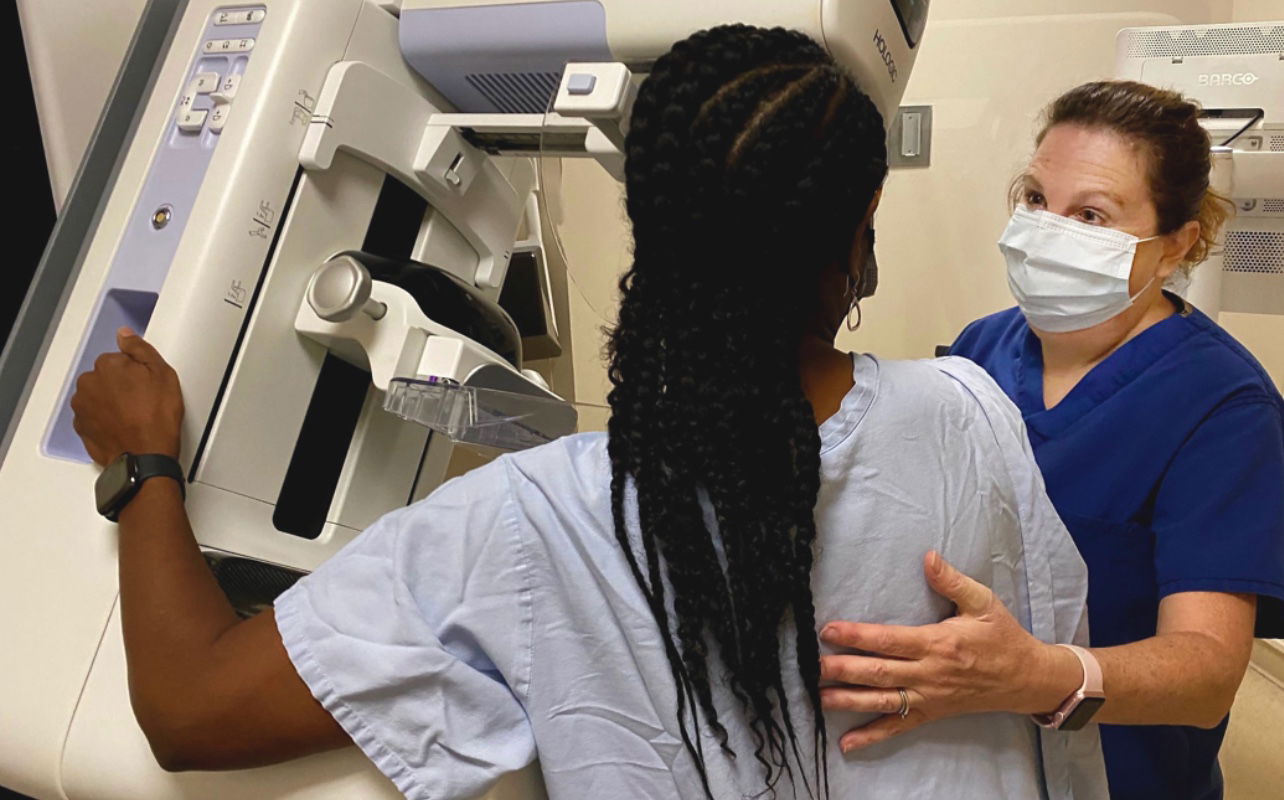
September 12, 2024
Women Will Soon Be Able To Find Out The Density Of Their Breasts During Routine Mammograms
This is game-changer.....
Mammograms will soon be able to determine the density of women’s breasts as dense breasts put women at higher risk of breast cancer, CNN reports.
Starting in September 2024, all mammography reports and result letters within the United States will be required to include an assessment of breast density. Breast density measures how much fibroglandular tissue is found in a woman’s breast compared to fatty tissue. The more fibroglandular tissue, the denser the breast. It also makes it more difficult for medical professionals to spot cancer on a mammogram.
Radiologist, Interim Chief of the Breast Imaging Service and Head of the Breast Imaging Quality Assurance at Memorial Sloan Kettering Cancer Center, Dr. Kimberly Feigin, says nearly half of women older than 40 in the United States have dense breast tissue. Feigin feels there are two significant reasons why density reports are necessary. “One is that breast density can make it more difficult to spot cancer on a mammogram because dense breast tissue -– the glandular elements and connective tissue supporting elements -– looks white on a mammogram and cancer also looks white on a mammogram,” Feigin said.
“The second reason that breast density is important is because having dense breast tissue raises a woman’s level of risk of developing breast cancer.”
The US Food and Drug Administration (USDA) made the final ruling that mammography facilities will be required to notify patients about the density of their breasts. According to CBS News, states like Colorado and Minnesota already have such regulations in place; however, this will be the first regulation to be mandated nationwide.
There are common misconceptions about dense breasts, including how they are determined, but doctors say dense breasts can’t be determined by self-exams or clinical exams, meaning it doesn’t depend on how a breast “feels.” It also doesn’t matter whether breasts are “perky” or “saggy.” “A lot of people will say, ‘I know I have dense breasts because it feels lumpy to me.’ That was actually not accurate,” said breast imaging radiologist at the MD Anderson Cancer Center, Dr. Toma Omofoye.
“It is not something that you can see or feel or touch. It is something that a radiologist will tell you based on what they see on a mammogram.”
The National Cancer Institute says dense breasts are often inherited but are also influenced by menopausal hormone therapy and having a low body mass index. JoAnn Pushkin, a breast cancer survivor, has been an advocate for more than 10 years, vying for it to be a national requirement for women to be notified about their breast density. She said the new rule has been coming for a long time. “I feel that because I wasn’t told I have dense breasts, I was effectively denied the opportunity for an early-stage diagnosis,” Pushkin said.
The new guidelines don’t provide specific next steps for patients with dense breasts but recommend that women talk with their medical providers to get a better sense of their individual risk and to determine the proper screening plan that suits their needs.